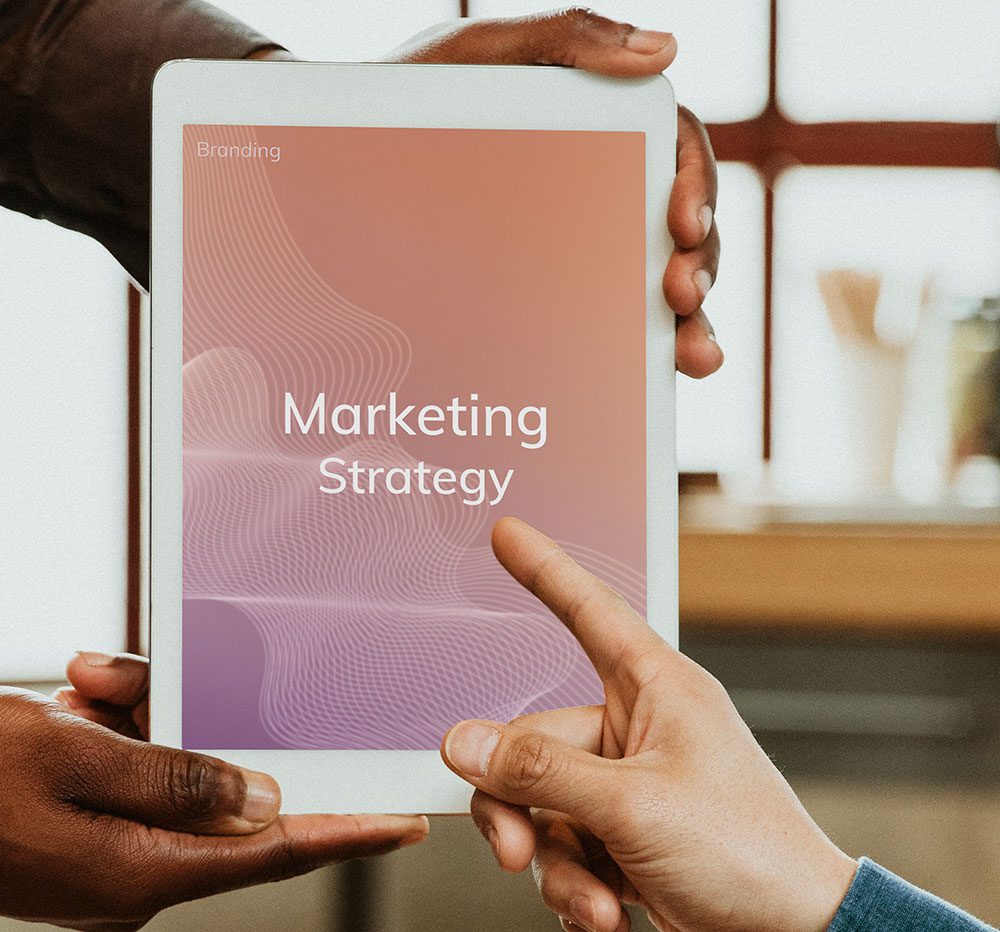20- Brochures, Business Cards, and Promotional Materials
Brochures, business cards, and promotional materials are essential tools for marketing and branding. They help convey information about a business, promote products or services, and enhance brand visibility. Here’s a comprehensive overview of each type, including their purpose, design elements, and best practices.
Brochures
Purpose
- Informational Tool: Brochures provide detailed information about a company’s products, services, or events.
- Marketing Collateral: They serve as a marketing tool to attract and engage potential customers, guiding them through the offerings.
Types of Brochures
- Tri-Fold Brochure: A popular format that folds into three sections, ideal for quick reference.
- Bi-Fold Brochure: Contains two panels, offering a more spacious layout for detailed information.
- Z-Fold Brochure: Folds in a zigzag pattern, allowing for a unique presentation of information.
Design Elements
- Visual Appeal: Use eye-catching images, graphics, and colors that align with your brand identity.
- Clear Messaging: Craft concise, compelling content that highlights key benefits and calls to action.
- Layout: Organize information logically with headings, subheadings, and bullet points for easy navigation.
Best Practices
- Target Audience: Tailor the content and design to resonate with your target audience’s needs and preferences.
- High-Quality Printing: Use quality paper and professional printing to enhance the brochure’s look and feel.
- Distribution: Strategically distribute brochures in locations where your target audience is likely to encounter them (e.g., trade shows, waiting rooms).
Business Cards
Purpose
- Networking Tool: Business cards are vital for networking, allowing individuals to share their contact information and create lasting impressions.
- Brand Representation: They serve as a compact representation of your brand, showcasing your logo, colors, and overall identity.
Key Elements
- Contact Information: Include essential details such as name, title, company name, phone number, email, and website.
- Branding Elements: Incorporate your logo and brand colors to ensure consistency with other marketing materials.
- Design: Consider a layout that balances visual appeal with clarity, ensuring that the information is easy to read.
Best Practices
- Keep It Simple: Avoid clutter and focus on essential information to ensure readability.
- Quality Materials: Choose sturdy cardstock and professional printing to convey quality and professionalism.
- Unique Features: Consider unique shapes, finishes (like matte or glossy), or embossing to make your card stand out.

Promotional Materials
Purpose
- Brand Awareness: Promotional materials are designed to attract new customers.
- Incentives and Giveaways: They often serve as giveaways or incentives to encourage customer engagement and loyalty.
Types of Promotional Materials
- Flyers: Simple, single-page documents used for announcements, events, or special offers.
- Posters: Large-format prints used for advertising events, products, or brand messages.
- Branded Merchandise: Items such as pens, mugs, t-shirts, or tote bags featuring the company logo and branding.
Design Elements
- Attractive Visuals: Use high-quality images and engaging graphics to capture attention.
- Compelling Copy: Write persuasive copy that communicates value and includes a clear call to action.
- Consistency: Ensure all promotional materials align with your overall brand identity, including colors, fonts, and messaging.
Best Practices
- Targeted Distribution: Distribute promotional materials in locations or at events where your target audience is present.
- Track Effectiveness: Use unique codes or links to track the effectiveness of promotional campaigns and materials.
- Engagement Strategies: Encourage interaction with promotional materials through contests, surveys, or social media engagement.

21- Consistency Across Print and Digital Mediums
Maintaining consistency across print and digital mediums is crucial for building a strong brand identity and ensuring a cohesive customer experience. Here’s an overview of why consistency matters, the key elements to consider, and best practices for achieving it.
Importance of Consistency
- Customer Experience: Consistency ensures that customers have a seamless experience whether interacting with your brand online or offline, improving satisfaction.
- Professionalism: A uniform look across all platforms conveys professionalism and attention to detail, enhancing credibility.
Key Elements of Consistency
Visual Identity
- Logo Usage: Ensure your logo appears the same in all formats. Define clear guidelines for size, spacing, and placement.
- Typography: Maintain the same fonts and text styles for headings, subheadings, and body text across all platforms. Specify font sizes and hierarchy for clarity.
Brand Voice and Messaging
- Tone of Voice: Use a consistent tone in all communications, whether formal, casual, friendly, or authoritative, to reflect your brand’s personality.
- Core Messaging: Ensure that key messages and value propositions remain consistent across print and digital channels. This includes taglines, product descriptions, and promotional content.
Imagery and Graphics
- Image Style: Use a consistent style for images, illustrations, and graphics (e.g., photography style, color filters). This creates a cohesive look and feel.
- Iconography: If using icons, ensure they have a uniform design style across all materials, including size, color, and detail level.

Best Practices for Achieving Consistency
a. Create a Style Guide
- Comprehensive Document: Develop a style guide that outlines all brand elements, including visual identity, tone of voice, and messaging. Share this guide with all team members and partners.
- Regular Updates: Review and update the style guide regularly to reflect any changes in branding or strategy.
b. Cross-Platform Design Tools
- Design Software: Use design tools that allow you to maintain brand consistency across different formats (e.g., Adobe Creative Suite, Canva). These tools often offer templates that can be adapted for both print and digital use.
- Collaboration Tools: Use collaboration tools to share design drafts and gather feedback from team members to ensure alignment with brand guidelines.
c. Training and Communication
- Staff Training: Provide training sessions for employees on brand guidelines and the importance of consistency. This helps ensure everyone understands and applies the standards correctly.
- Regular Check-Ins: Conduct regular reviews of marketing materials across all channels to ensure adherence to brand standards.
d. Testing and Feedback
- A/B Testing: Experiment with different designs and messaging across platforms to see what resonates best with your audience while maintaining brand consistency.
- Customer Feedback: Gather feedback from customers regarding their experience with your brand across different mediums. Use this information to make improvements and maintain consistency.

Step 9: Ensuring Scalability of Brand Guidelines
In today’s dynamic business environment, ensuring the scalability of brand guidelines is crucial for sustained growth and consistency as a brand evolves. As companies expand, enter new markets, or diversify their offerings, having scalable brand guidelines allows them to maintain a coherent identity while adapting to various contexts. This comprehensive approach will explore the importance of scalability in brand guidelines, the core components that facilitate scalability, and best practices for implementation.
Understanding the Importance of Scalable Brand Guidelines
Scalable brand guidelines are essential for several reasons:
A. Consistency Across Touchpoints
As brands grow, they often engage with diverse audiences through multiple channels, such as social media, websites, print collateral, and advertisements. Scalable guidelines ensure that the brand’s visual and verbal identity remains consistent across all touchpoints, regardless of the medium or audience.
B. Adaptability to New Markets
When brands enter new markets or demographic segments, they may need to adapt their messaging and visual identity to resonate with local cultures and preferences. Scalable brand guidelines provide a framework for these adaptations while preserving the core brand essence.
C. Streamlined Processes
As businesses scale, the number of stakeholders involved in brand communication increases. Scalable guidelines streamline the creation of marketing materials, making it easier for internal teams and external partners to produce collateral that aligns with the brand’s identity.
D. Facilitating Brand Extensions
When launching new products or services, having scalable brand guidelines allows for the smooth integration of these extensions into the existing brand framework. This approach maintains brand equity and ensures that new offerings align with the overarching brand identity.

Core Components of Scalable Brand Guidelines
To ensure the scalability of brand guidelines, several core components should be included:
A. Comprehensive Brand Framework
- Mission and Vision: Clearly articulate the brand’s mission and vision. This foundation guides all brand-related decisions and communications, ensuring that adaptations align with the brand’s overall purpose.
- Core Values: Define the brand’s core values, which serve as guiding principles for behavior, decision-making, and communication. These values should remain constant, even as the brand evolves.
B. Flexible Visual Identity
- Typography: Specify a core typeface for brand communications, along with alternatives that maintain visual harmony. This flexibility allows for creative expression while ensuring consistency.
- Imagery Guidelines: Establish guidelines for photography, illustrations, and graphics that reflect the brand’s personality. These guidelines should allow for creativity while ensuring that visual content aligns with the brand’s values and tone.
C. Adaptive Content Guidelines
- Messaging Framework: Create a messaging framework that includes key messages, value propositions, and taglines. This framework should allow for variations based on specific campaigns or target audiences while ensuring that the core message remains intact.
- Templates and Examples: Provide templates for common marketing materials (e.g., brochures, presentations, social media posts) to facilitate adherence to brand guidelines. Including examples of both successful and unsuccessful applications helps clarify expectations.
Best Practices for Ensuring Scalability
D. Implementation Strategies
- Stakeholder Engagement: Involve key stakeholders in the development and review of brand guidelines. Engaging various teams (e.g., marketing, design, sales) ensures that the guidelines meet the needs of different departments and promotes buy-in.
- Training and Education: Offer training sessions and resources to educate employees and partners about the brand guidelines. Ensure that everyone understands the importance of consistency and how to apply the guidelines in practice.
- Accessibility of Guidelines: Make the brand guidelines easily accessible in a digital format, such as an online portal or intranet. Regularly update the guidelines to reflect changes in branding or market conditions.
Best Practices for Ensuring Scalability
o effectively ensure the scalability of brand guidelines, consider the following best practices
A. Regular Review and Adaptation
- Conduct Audits: Periodically audit existing brand materials to assess adherence to the guidelines. Identify areas for improvement and gather feedback from stakeholders on the effectiveness of the guidelines.
- Stay Current with Trends: Monitor industry trends and changes in consumer preferences. Be willing to adapt the brand guidelines to remain relevant and responsive to evolving market dynamics.
B. Foster a Culture of Brand Ownership
- Encourage Brand Advocacy: Empower employees to become brand advocates. Encourage them to share their experiences and insights related to the brand, fostering a sense of ownership and pride.
- Reward Compliance: Recognize and reward teams or individuals who consistently adhere to brand guidelines. This recognition reinforces the importance of maintaining brand consistency.
C. Leverage Technology
- Digital Asset Management (DAM): Utilize a DAM system to organize and store brand assets (e.g., logos, templates, imagery). A DAM system ensures that teams can easily access the latest brand materials and guidelines.
- Collaboration Tools: Use collaboration tools to facilitate communication among team members and stakeholders involved in brand-related projects. This fosters collaboration and ensures that everyone is aligned with the brand guidelines.

22- Ensuring All Departments Adhere to Branding Guidelines
Here are strategies to ensure that every department adheres to branding guidelines effectively
Communicate the Importance of Branding
- Clear Messaging: Explain the significance of branding to all employees. Highlight how consistent branding enhances the company’s image, builds trust, and improves customer experience.
- Leadership Buy-In: Ensure that leadership supports and advocates for adherence to the guidelines, setting an example for the rest of the organization.
Provide Comprehensive Training
- Onboarding Programs: Integrate brand training into onboarding programs for new employees, ensuring they understand the brand guidelines from the start.
- Ongoing Workshops: Offer regular workshops and training sessions to keep existing employees informed about the guidelines, updates, and best practices.
Create Accessible Resources
- Centralized Resource Hub: Develop a centralized repository where employees can access branding guidelines, templates, logos, and other assets. Make sure this resource is easy to navigate.
- Quick Reference Guides: Provide quick reference materials or cheat sheets summarizing key branding elements for quick access.
Designate Brand Champions
- Brand Ambassadors: Identify brand champions in each department who can advocate for the brand, answer questions, and ensure compliance. These individuals can act as points of contact for branding-related queries.
- Cross-Functional Teams: Form cross-departmental teams to promote collaboration and sharing of best practices related to branding.
Integrate Guidelines into Daily Operations
- Standard Operating Procedures (SOPs): Incorporate branding guidelines into SOPs for marketing, communications, and customer service processes. This ensures adherence becomes part of routine activities.
- Template Usage: Provide templates for presentations, emails, social media posts, and marketing materials to streamline the creation of compliant content.
Implement Approval Processes
- Review and Approval Workflows: Establish workflows that require branding review and approval before materials are finalized or published. This helps catch inconsistencies before they reach the public.
- Designate Reviewers: Assign specific individuals or teams to review materials for compliance with branding guidelines.
Monitor and Evaluate Compliance
- Regular Audits: Conduct periodic audits of various departmental outputs (e.g., marketing materials, internal communications) to assess adherence to the guidelines. Provide feedback on areas for improvement.
- Collect Feedback: Encourage employees to report any issues or inconsistencies they observe, creating a culture of accountability.
Foster a Collaborative Culture
- Encourage Teamwork: Promote collaboration between departments to share ideas and best practices related to branding. This fosters a sense of collective responsibility for brand adherence.
- Celebrate Successes: Recognize and reward departments or individuals who exemplify brand adherence, showcasing their work as examples for others.
Adapt and Update Guidelines as Necessary
- Regular Revisions: Update the guidelines as needed and communicate any changes effectively to all departments, ensuring everyone is aware of the latest standards.
- Open to Feedback: Create channels for employees to provide input on the branding guidelines. This encourages engagement and ensures the guidelines remain relevant.

23- Training Employees and Partners on Brand Consistency
Training employees and partners on brand consistency is essential for maintaining a unified brand identity and ensuring that everyone understands and embodies the brand values. Here’s a comprehensive guide on how to effectively train these stakeholders on brand consistency
Develop a Structured Training Program
- Comprehensive Curriculum: Create a training program that covers all aspects of branding, including the brand’s mission, values, visual identity, tone of voice, and messaging guidelines. Include real-world examples to illustrate key concepts.
- Modular Training: Design the program in modules, allowing for flexibility. Employees and partners can complete training at their own pace, focusing on areas relevant to their roles.
Utilize Diverse Training Methods
- Workshops and Seminars: Conduct interactive workshops and seminars to engage employees and partners. Use case studies, group discussions, and activities to reinforce learning.
- Online Training: Provide online courses or webinars that can be accessed anytime. This is particularly useful for remote teams or partners in different locations.
- Printed Materials: Distribute printed guides, quick reference sheets, and checklists that summarize branding guidelines for easy access.
Incorporate Brand Storytelling
- Share the Brand Narrative: Use storytelling to communicate the brand’s history, mission, and values. Sharing personal stories or testimonials can help employees and partners connect emotionally with the brand.
- Highlight Success Stories: Showcase examples of successful branding efforts within the organization. This can motivate participants to embody brand consistency in their work.

Hands-On Practice
- Role-Playing Exercises: Incorporate role-playing scenarios that simulate real-life situations employees may encounter, allowing them to practice applying brand guidelines in a supportive environment.
- Creative Projects: Encourage employees to create mock marketing materials or social media posts using the brand guidelines. Provide feedback to reinforce learning.
Encourage Collaboration
- Cross-Departmental Training: Facilitate training sessions that bring together employees from different departments to discuss how branding impacts their specific functions. This promotes a holistic understanding of brand consistency.
- Partner Engagement: Include partners in training sessions to align them with the brand values and messaging, ensuring they represent the brand consistently in their interactions.
Provide Ongoing Support and Resources
- Resource Hub: Create an easily accessible online hub where employees and partners can find branding resources, including guidelines, templates, and FAQs.
- Mentorship Programs: Pair new employees or partners with experienced team members who can mentor them on brand consistency and best practices.
Implement Assessment and Feedback
- Knowledge Assessments: Conduct assessments after training sessions to gauge understanding and retention of brand guidelines. Use quizzes or practical assessments to evaluate knowledge.
- Feedback Mechanisms: Establish channels for participants to provide feedback on the training program. This helps identify areas for improvement and ensures the training remains relevant.
Monitor and Reinforce Training Outcomes
- Recognize Efforts: Acknowledge and reward employees or teams that exemplify brand consistency in their work. This reinforces the importance of the training and motivates others to follow suit
- Regular Check-Ins: Schedule follow-up sessions or check-ins to reinforce training concepts and address any questions or challenges employees may face in applying brand consistency.

24- How Clear Branding Guidelines Improve Recognition and Trust
Clear branding guidelines are essential for creating a consistent and recognizable brand identity. They play a significant role in enhancing brand awareness and building trust with consumers. Here’s how effective branding guidelines achieve these objectives
Consistency in Brand Presentation
- Unified Visual Identity: Branding guidelines dictate the use of logos, colors, typography, and imagery. When these elements are consistently applied across all platforms (websites, social media, packaging, etc.), it creates a cohesive visual identity that is easily recognizable.
- Reinforced Brand Image: Consistent branding helps establish a strong image in the minds of consumers. Over time, this familiarity leads to quicker recognition, as people associate specific visuals with the brand.
Memorable Brand Experience
- Distinctive Brand Elements: Clear guidelines help create distinctive brand elements that stand out in a crowded marketplace. Unique logos, colors, and messaging can make a brand more memorable.
- Emotional Connection: Consistency fosters familiarity, which can create emotional connections with consumers. When people recognize and resonate with a brand, they are more likely to trust it.
Professionalism and Credibility
- Perception of Quality: Consistent use of branding guidelines conveys professionalism and attention to detail. This perception can enhance the overall credibility of the brand.
- Trustworthy Image: A well-presented brand signals reliability. Consumers are more likely to trust a brand that maintains a polished and coherent identity across all touchpoints.
Effective Communication of Brand Values
- Clear Messaging: Branding guidelines often include tone of voice and messaging standards. Consistent communication of the brand’s values and mission helps consumers understand what the brand stands for.
- Alignment with Audience Expectations: When a brand consistently communicates its values, it aligns with consumer expectations, reinforcing trust. Consumers are more likely to engage with brands that share their values.

Reduced Consumer Confusion
- Clarity in Brand Identity: Clear branding guidelines reduce confusion about the brand’s identity and offerings. When consumers know what to expect from a brand, they are more likely to engage positively.
- Enhanced User Experience: A consistent brand experience across different platforms (e.g., online, in-store) enhances user experience, making it easier for consumers to interact with the brand confidently.
Fostering Brand Loyalty
- Building Long-Term Relationships: Trust is a critical component of brand loyalty. When consumers consistently recognize and feel comfortable with a brand, they are more likely to become loyal customers.
- Encouraging Advocacy: Satisfied customers who trust a brand are more likely to recommend it to others. This word-of-mouth marketing can significantly expand the customer base.
Crisis Resilience
- Consistent Messaging: During challenging times, clear branding guidelines help maintain consistent messaging, which is crucial for preserving trust and credibility.
- Trust During Uncertainty: In times of crisis or uncertainty, a well-established brand identity can provide reassurance to consumers. They are more likely to turn to a familiar, trusted brand rather than an unknown competitor.

Conclusion- The Importance of Strong Branding Guidelines
Effective branding guidelines play a pivotal role in shaping a brand’s identity, recognition, and trust among consumers. By establishing clear guidelines for brand values, mission, and vision, organizations can create a cohesive and unified brand presence that resonates with their target audience. Identifying the needs of customers allows brands to align their messaging and offerings, fostering deeper connections.
Crafting a distinct brand personality and determining the brand’s tone and voice are essential for communicating the brand’s essence consistently. Aligning brand personality with customer expectations helps ensure that the brand remains relevant and relatable, further enhancing customer trust.
Designing a strong visual identity, including logo usage, color palettes, typography, and imagery standards, is vital for creating a memorable brand experience. Consistent application of these visual elements across all platforms strengthens the brand and conveys professionalism.
Creating clear rules for content creation, including writing style and content formats, reinforces brand messaging and ensures coherence across various channels. A well-defined digital presence through website design, social media branding, and email marketing further solidifies the brand identity, enhancing user experience and engagement.
Internal and external communication guidelines, alongside customer service protocols, help maintain brand interactions, contributing to a trustworthy reputation. Building a comprehensive style guide for marketing collateral ensures that all materials, from brochures to business cards, align with the brand’s visual and messaging standards, fostering recognition.
The adaptability of branding guidelines allows organizations to evolve while maintaining their core identity, ensuring long-term relevance in a changing market. Continuous reinforcement of brand identity through consistent messaging, audience engagement, and regular updates helps cultivate loyalty and advocacy among consumers.
In summary, strong branding guidelines are foundational for establishing and maintaining a successful brand identity. By prioritizing consistency, clarity, and customer connection, organizations can enhance trust, ultimately driving sustainable growth and success in the marketplace.
Continue Reading
- How to Create Comprehensive Branding Guidelines- A Step by Step Guide / Part 1
- How to Create Comprehensive Branding Guidelines- A Step by Step Guide / Part 2
- How to Create Comprehensive Branding Guidelines- A Step by Step Guide / Part 3
- How to Create Comprehensive Branding Guidelines- A Step by Step Guide / Part 4
- How to Create Comprehensive Branding Guidelines- A Step by Step Guide / Part 5
- How to Create Comprehensive Branding Guidelines- A Step by Step Guide / Part 6
Written By: Zahraa El Husseini
















































































































